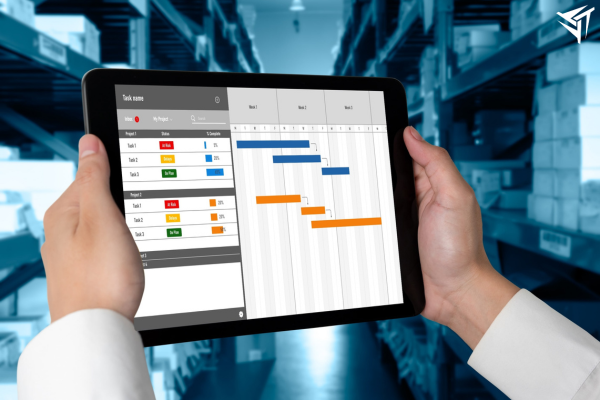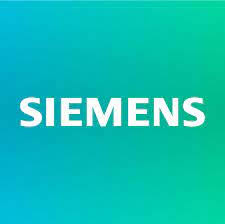Manufacturing Production Scheduling Software
Manufacturing Scheduling Software connects digital scheduling data with physical production by tracking and controlling work orders in real time. It aligns production planning with resource availability and customer demand, reducing bottlenecks while enhancing operational efficiency.
This solution supports smart manufacturing by merging dynamic scheduling insights with centralized production control and facilitating agile decision-making.
Manufacturing Scheduling Challenges
Manufacturing scheduling is complicated by shifting customer demands, resource constraints, and production variability. Manual planning tools and disconnected systems make it hard to adjust schedules in real time. Without dynamic scheduling capabilities, manufacturers face delays, bottlenecks, and missed delivery targets.

What Does Production Scheduling Software Do?
Production Scheduling Software organizes and optimizes manufacturing schedules to align resources, labor, and materials with demand. It generates detailed, real-time production plans that account for constraints like machine availability, shift patterns, and order priorities. This improves on-time delivery, maximizes throughput, and reduces bottlenecks by keeping production efficient and responsive.

Features of Manufacturing Scheduling Software
Real-Time Production Scheduling
Leverages advanced algorithms that dynamically update production sequences as orders and machine statuses change. It adapts instantly to disruptions and process variations, ensuring seamless flow and peak operational efficiency.
Integrated Analytics & Visualization
Features interactive dashboards and visual planning tools that transform raw production data into actionable insights. Users can track progress, spot bottlenecks, and fine-tune schedules to drive continuous process improvements.
Automated Resource Allocation
Automatically assigns machines, labor, and materials by balancing capacity with demand forecasts. This smart feature reduces idle time and streamlines scheduling across shifts, enhancing overall output while coordinating resources optimally.
Manufacturing Scheduling Software Benefits
Optimized Efficiency
Maximizes throughput by precisely aligning production activities and reducing idle time.
Reduced Downtime
Quickly adjusts schedules to mitigate delays from unexpected process changes.
Enhanced Flexibility
Adapts promptly to order and capacity fluctuations for smoother operations.
Improved On-Time Delivery
Ensures products are manufactured and delivered according to planned timelines.
Cost Savings
Cuts operational expenses by reducing waste and improving resource use.
Boosted Productivity
Streamlines processes to increase output with smarter work coordination.
Siemens Opcenter APS
Snic Solutions is recognized as one of the elite organizations partnered with Siemens as a value-added reseller of Opcenter.
/About%20Page/Blake%20Digital%20Transformation%20Solutions.png?width=500&height=500&name=Blake%20Digital%20Transformation%20Solutions.png)

Software Integration
Manufacturing Production Scheduling Software integrates with MES, ERP, and APS systems to align production plans with real-time shop floor conditions and material availability.
What happens when you integrate?
Integration ensures dynamic schedule adjustments based on actual capacity and demand. This minimizes downtime, improves on-time delivery, and enhances coordination between planning and execution.

From Our Blog
Stay up to date with what is new in our industry, learn more about the upcoming products and events.

How is a Gantt Chart Used in Manufacturing Process?
In manufacturing, Gantt charts are used to simplify production by visualising task…
.png)
Top Advantages of Laboratory Automation Systems
Are you curious about how laboratory automation can benefit your lab? Laboratory a…
.png)
What Is A Bidirectional LIMS?
LIMS bidirectional communication, or what is LIMS bidirectional, refers to the two…
Frequently Asked Questions
Have Question? We are here to help
How do you create a production schedule for manufacturing?
Start by analyzing demand, resource capacity, and deadlines. Then, use scheduling software to allocate tasks, balance workloads, and sequence jobs to optimize throughput.
What is the difference between production scheduler and planner?
A production planner develops the overall manufacturing plan, while a production scheduler creates the detailed day-to-day sequence of tasks and resources.
What is a production planner in manufacturing?
A production planner is responsible for forecasting demand, setting production goals, and aligning material and labor needs with delivery timelines.
What are the three types of production scheduling?
-
Forward Scheduling – Plans from start to finish
-
Backward Scheduling – Plans from deadline backward
-
Centralized Scheduling – Oversees all operations from a single point
What is the schedule of manufacturing?
It’s a detailed timeline of production activities, outlining when and where specific products are made, using which machines and resources.
What does scheduling mean in manufacturing?
Scheduling is the process of assigning jobs to machines and labor based on priority, availability, and delivery dates to ensure efficient production flow.
What is the production scheduling process?
It involves planning work orders, allocating resources, sequencing jobs, and tracking progress to meet deadlines and optimize throughput.
What is a production schedule in manufacturing?
It’s a structured plan that outlines when and how products will be manufactured, including job assignments, durations, and resource usage.
What is the production scheduling process in the manufacturing cycle?
It starts after production planning and includes task sequencing, machine assignment, shift planning, and continuous adjustment based on real-time inputs.
What are the four stages of production planning and scheduling?
-
Routing
-
Scheduling
-
Dispatching
-
Follow-up and monitoring
What does a production scheduler do?
A scheduler assigns jobs, manages workloads, and adjusts timelines in real time to keep production running smoothly and on target.
What is production scheduling in manufacturing?
It’s the process of organizing and managing the production timeline, ensuring that materials, labor, and machines are used efficiently.
What should be included in a production schedule?
Job orders, start/end times, machine assignments, labor availability, materials needed, and production priorities.
What is the basic schedule of a production?
It’s a time-based plan that outlines what will be produced, when, and using which resources, usually displayed in a Gantt chart or dashboard.
How do you create a manufacturing schedule?
Use real-time data on demand, capacity, and resource availability. Apply scheduling software to allocate jobs and update plans as changes occur.
What are the production scheduling process in the manufacturing cycle?
It includes job release, task sequencing, resource allocation, real-time adjustments, and progress monitoring throughout the production workflow.
Partner With Us To Reduce Your Technical Debt
Snic Solutions is recognized as one of the elite organizations partnered with Siemens as a value-added reseller of Opcenter.
/About%20Page/Blake%20Digital%20Transformation%20Solutions.png?width=500&height=500&name=Blake%20Digital%20Transformation%20Solutions.png)
